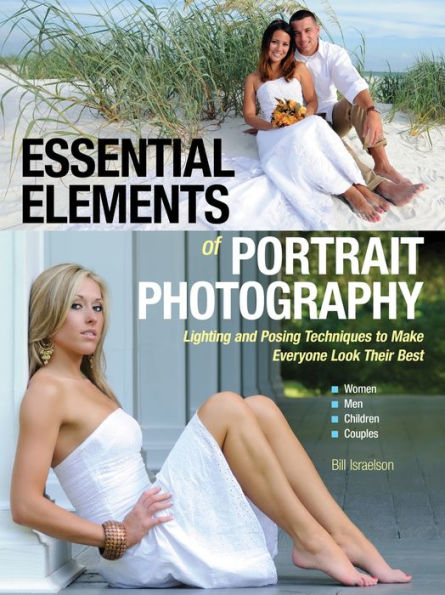Table of Contents
Author Biography 5
Introduction 6
The Goal of This Book 6
Obstacles to Good Photography 9
Learning to See the Light 9
Exposure 9
Posing 9
I'll Fix It in Photoshop 11
Photography Is Art-But It Involves Technical Know-How 12
1 Equipment 14
What Equipment Do I Need? 14
The Basic Portrait Photography Kit 15
DSLR Body 15
Tech Tip: Digital Sensors 18
Lens 20
Tech Tip: Aperture and F-Stops 22
Flashgun 23
Loupe 24
Tech Tip: Ambient, Incident, and Reflected Light 25
Tripod 25
Light Meter 26
All That in One Small Bag! 27
Mobile Equipment 27
Scrims 27
Portable Battery Pack and Strobe 28
Reflectors 28
Studio Equipment 29
Light Meter 29
Strobes 29
Softboxes and Umbrellas 29
Reflectors and Flags 30
Backdrops 31
Stands 31
Advanced Studio Equipment 32
2 Photographs People 35
Idealize the Subject 35
What You "See" Is What You Get 37
Posing: Keep It Simple 37
Posing Women 38
Posing Men 39
Posing Children and Families 40
Glamour and Fashion 45
3 A Simple Process 47
Key Light 48
Fill Light 48
Rim Light 49
Step 1 Gainfully Evaluate Light Sources 49
Analysis 50
Selection 54
Step 2 Compose the Image in Your Mind 56
Step 3 Position and Pose Your Client 59
Step 4 Measure Light Sources and Set Camera Controls 60
Tech Tip: White Balance 61
Step 5 Position and Set Power to Light Sources 64
Tech Tip: ISO 65
Step 6 Take an Exposure, then View the LCD and Histogram 66
The LCD: Seeing Is Believing 66
Tech Tip: Histogram 68
The Histogram: Seeing Is Verifying 69
4 Outdoor Portraits 72
The Person Is the Central Object of Your Photograph 73
The Background 73
Tech Tip: Lens, Aperture, and Depth of Field (DOF) 74
Close Background 75
Distant Background 77
Panoramic Background 77
Diminishing Line and the Horizon 77
Sunlight 78
Bright and Sunny Sky Techniques 80
Using On-Camera Flashgun 83
Using Off-Camera Flash (Mobile Strobes) 83
Shady Areas Under a Bright Sun 84
Overcast and Cloudy Sky Techniques 86
Tech Tip: RAW versus JPEG 87
Beach Photography 89
5 Studio Portraits 96
The Studio as a Workspace 96
Incident Light Meters 96
Lens Selection 96
Strobes 98
Tech Tip: Focal Plane Shutter and Flash Synchronization 100
Softboxes 101
Feathering the Light 101
Umbrellas 101
Grids 102
Reflectors 102
Flags 102
Backdrops and Props 102
Tech Tip: Light Ratios 103
Camera Support 104
Light Ratios 104
Portrait Styles 105
Short Lighting 105
Broad Lighting 105
High Key 105
Mid Key 109
Low Key 110
Tech Tip: Inverse Square Law 110
6 Indoor Portraits 114
Reflecting Light Off the Ceiling 115
Using a Window as the Key Light 116
7 Practice, Practice, Practice 120
Now You Are Ready! 120
Follow the Process 120
Review Your Work with a Critical Eye 123
Editing the Digital Image 123
Attend Workshops and Photography Seminars by Great Photographers 124
A Short List of the Photographers Whom I Admire Most 124
Index 126



